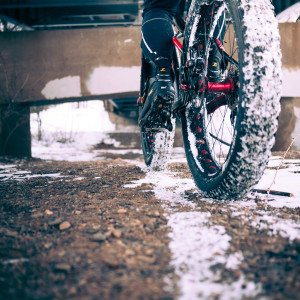 No doubt about it, biking has a been a popular sport and recreation for decades. And while even as recently as 20 years ago, it was either possible to get “just” a mountain bike or “just” a cruising bike, that’s long since changed. Mountain bikes are now available in a wide array of styles, some features full suspension and some featuring none, just like the pre-80s originals. City cruiser bikes are now available as folding bikes, touring bikes, commuter bikes, the list goes on! If there’s an activity you can think of doing, chances are there’s a bike that will help you do it!
No doubt about it, biking has a been a popular sport and recreation for decades. And while even as recently as 20 years ago, it was either possible to get “just” a mountain bike or “just” a cruising bike, that’s long since changed. Mountain bikes are now available in a wide array of styles, some features full suspension and some featuring none, just like the pre-80s originals. City cruiser bikes are now available as folding bikes, touring bikes, commuter bikes, the list goes on! If there’s an activity you can think of doing, chances are there’s a bike that will help you do it!
Click here to see the best selling Fat Tire Bike
Now, biking is more accessible and easier than ever. With multiple places online to shop for bikes, you don’t have to look very far before finding something that really stands out to you! Besides, with growing awareness of the health of the planet, many people are choosing to commute to work via bicycle instead of car or train, and you can join them! However, this article isn’t going to tell you about commuter bikes. This article is going to help you pick the best fat bike for you.
Even if you are new to cycling, a fat bike could still be a great purchase! Since the tires are so wide and they’re so easy to ride, they’re great for beginners. Imagine learning how to ride a bike in the snow—I bet most of your friends won’t be able to say they did that! And since they generally behave like mountain bikes, you really can ride them everywhere! With a fat bike, you’re sure to draw attention and stay fit at the same time, all while having tons of fun in every type of weather imaginable! And really, you can’t beat that.
There’s also a growing area of tourism that involves fat bikes. Since they are incredibly easy to ride on almost every terrain possible, fat bike tours are now a thing. Imagine biking through vineyards in France with a group of people, or biking through city centers in Texas! There’s probably even a fat bike tour group for desert rides—talk about being more prepared for Burning Man this year than ever before! Fat bike tourism is a great way to go on vacation and still stay in shape (because if you count calories, it’s not really a vacation), so if you’re dying to be more active in your leisure time, consider a fat bike tour today!
What’s A Fat Bike, And Why Should I Care?
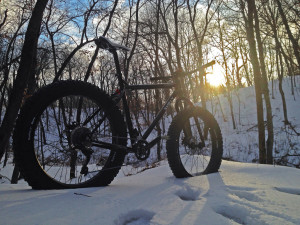 You’d be forgiven if you laughed after reading ‘fat bike’ for the first time; no one could blame you! However, despite their weird name, fat bikes are actually some of the coolest bikes available to ride today. Much like a mountain bike, a fat bike is designed to ride over non-standard terrain. But unlike a mountain bike, the range of possible places to ride is endless! People love riding them on the beach, on nature trails, even through the snow! Fat bikes open up the world around you; on a single morning, you could cycle through a city, along the beach, and in the woods. And you wouldn’t even have to stop to switch tires on your bicycle! Isn’t that incredible? Plus, with their rugged tough appearance, fat bikes are incredibly stylish and eye catching.
You’d be forgiven if you laughed after reading ‘fat bike’ for the first time; no one could blame you! However, despite their weird name, fat bikes are actually some of the coolest bikes available to ride today. Much like a mountain bike, a fat bike is designed to ride over non-standard terrain. But unlike a mountain bike, the range of possible places to ride is endless! People love riding them on the beach, on nature trails, even through the snow! Fat bikes open up the world around you; on a single morning, you could cycle through a city, along the beach, and in the woods. And you wouldn’t even have to stop to switch tires on your bicycle! Isn’t that incredible? Plus, with their rugged tough appearance, fat bikes are incredibly stylish and eye catching.
This article is going to teach you all about the best fat bikes, and which one would be perfect for you. First, we’ll talk about all the things that make a fat bike fat—that is, what makes them different from regular cycles. By the end of that section, you’ll know everything you need to look out for when shopping for your very own fat tire bike! We’ll go over everything you should and shouldn’t keep in mind when looking, so you’ll feel more ready than ever to get fat and go exploring. After that, we’ll look at five individual fat bikes. These will be real reviews, ranging from more economical options to the most expensive. And we’ll even quote some individual real users, so you can find out who likes what (or doesn’t) about each bike we look at! Finally, we’ll go over a few quick notes and then you’ll more likely than not be itching to hit the beach! Or the snow! Or whatever, because the best fat bikes can do it all!
History of the Fat Tire Bicycle
Some quick historical info: fat bikes (or snow bikes, as they were formerly called) have been around since the early part of the 20th century. But they really haven’t caught on until the past 3 or 4 years! It started when mass manufacturers started crafting fat bikes as a novelty, but they really caught on when everyone found out how fun they are to ride. They’re often called the ‘juggernaut’ of bicycles, and sometimes a shop will even recommend a fat bike over a regular bike due to their versatility! They’re the most fun in the snow, but they’re great on all other terrain. With a fat bicycle, you’re sure to have a great time year round! And really, isn’t that incredible? Most cyclists can only enjoy biking two or three seasons during the year, maybe during the winter if they have a special road bike with winter tires, but not riders of fat bikes! Winter is typically a season where people hide inside from the snow and cold, slowly gaining weight on holiday treats, but not for you and your new fat cycle. You’ll be the envy of your family during the holidays; everyone is sure to wanna get out and get some fresh air but no one wants to deal with the cold. Except for you and your new ride, that is! If you want to stay fit all through the year, a new piece of gear is definitely your best bet!
What To Look For…
Even though you’re likely not a stranger to the world of recreational biking, shopping for a fat bike is definitely going to be a different experience than shopping for a city cruiser or a mountain bike. First of all, we’ll talk about price ranges. Unfortunately, what you spend can have a huge impact on the quality of your purchase, so you’re going to want to invest carefully. You won’t need to break the bank in order to get a great fat bike, but you will have to do some careful and thorough research! Not to worry, because that’s why this article was written; just to help you out!
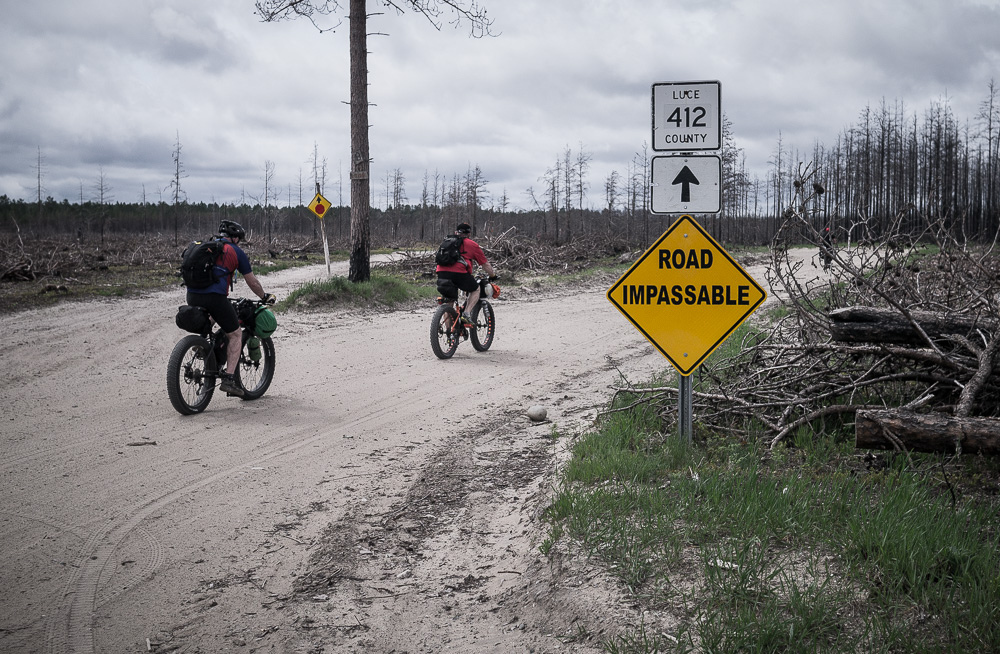 Daily Use?
Daily Use?
Before we look at price, it’s important to be practical and honest with yourself. Before dropping money on any new hobby, it’s important to know how often and how much time you’ll spend making that purchase worth your while. If you really love the idea of a fat bike but can’t let go of 60-hour workweeks, you may not be the best candidate for an expensive custom fat bike. Think about how often you’ll be riding, whether it’s a few times a week or a few times every few months. You’ll also want to think about which type of terrain you’ll be riding on most frequently. Sure, a fatter cycle is incredibly versatile, but just like any other bicycle, certain brands and styles have their strengths and weaknesses. If you’re not going to be biking very often and probably just on sandy or snowy terrain, think about investing in a ready-to-ride fat bike! These are going to come with all the parts you need upon purchase; no need to go out and upgrade or customize. Sure, you can add a few small touches here and there, but the point of a ready-to-ride bike is just that; once you unbox it and have it assembled, you’re ready to go! If you’re thinking that you’ll be a more intense rider of your new product, think about a custom bike, or working with someone at a local bike shop in order to create the perfect cycle for you. Local bike shop employees are a wealth of knowledge, and you’re bound to learn a thing (or ten!) from visiting and chatting with them, about fat bikes or no.
Price
Now, let’s talk about cash. You can find fat bikes in a wide array of prices, so it’s okay to be very flexible when looking. Just like with other bikes, the material is going to influence the cost quite a bit. Steel frames are going to be the least expensive, because they’re the heaviest. More expensive frame materials include aluminum, carbon, and titanium. If you need yours to be extra light, it’s worth spending a bit more for a lightweight frame—since the wheels add so much weight, a steel frame wouldn’t be the best idea if you’re desperately in need of a lightweight bike. Brakes also influence price, and trust us, that’s one area where you do not want to scrimp! Smaller factors on fat bike price include rims and tires. Most will have a frame that can accommodate heavy tires and a full set of gears, and the wider the rim is, the wider the tire can get. Standard tire sizes are 3.8”, 4”, 5”, and 8”. Obviously, 8” is the widest with 3.8” coming in at the most narrow. Wider rims and tires add weight to a bicycle, and require more effort from you when pedaling on a flat surface or a slope. Thinner tires are more dynamic; wider tires are much better for riding in snow and sand. Wider tires are also incredible for climbing a hill; they make it so much easier, and it reduces strain and pressure on your joints while riding. The large tires provide extra suspension, so it’ll actually feel like you’re gliding up a mountain! Imagine the Go Pro possibilities! One of the most convenient things about fat bikes is that they can run on extremely low tire pressure. While this takes a little bit of getting used to, it’s overall much more convenient, especially since you’ll be riding in the winter. When you ride any kind of 2 wheels in cold weather, you generally need to deflate the tires a little bit because of the fluctuation in air pressure. And for riding in winter, there’s just one more caveat. If you live in a climate with heavy snow and ice, you may want to think about investing in some studded tires for your fat bike. Studded tires work really well on slippery surfaces, and while they won’t be necessary for most riders, they can really help you out a lot. Consider them if you plan to do a lot of heavy biking in the snow!
Five Best Fat Bike Reviews For You!
Well, maybe; these fat bike reviews will really help you narrow the playing field, even if you’re not sure that any one of them is the perfect bicycle for you! We’ll review fat bikes in a variety of price ranges and styles, and by the end, you may have even more questions than you did at the beginning! That’s okay; more specific questions can be answered on your own by doing research or by chatting with people at the local bike shop. And don’t be fooled in these reviews; none of them are going to make outlandish claims or ship you an inferior product! All of these fat bike reviews are engineered to inform you, so you know exactly what you’re getting yourself into. We’ll take quotes from real fat bike riders and let you know what’s hot or not about a certain bike. And with a range of five, you’re bound to find something that appeals to you!
Without further ado, enjoy these fat bike reviews!
Beast Fat Tire Bicycle by Mongoose
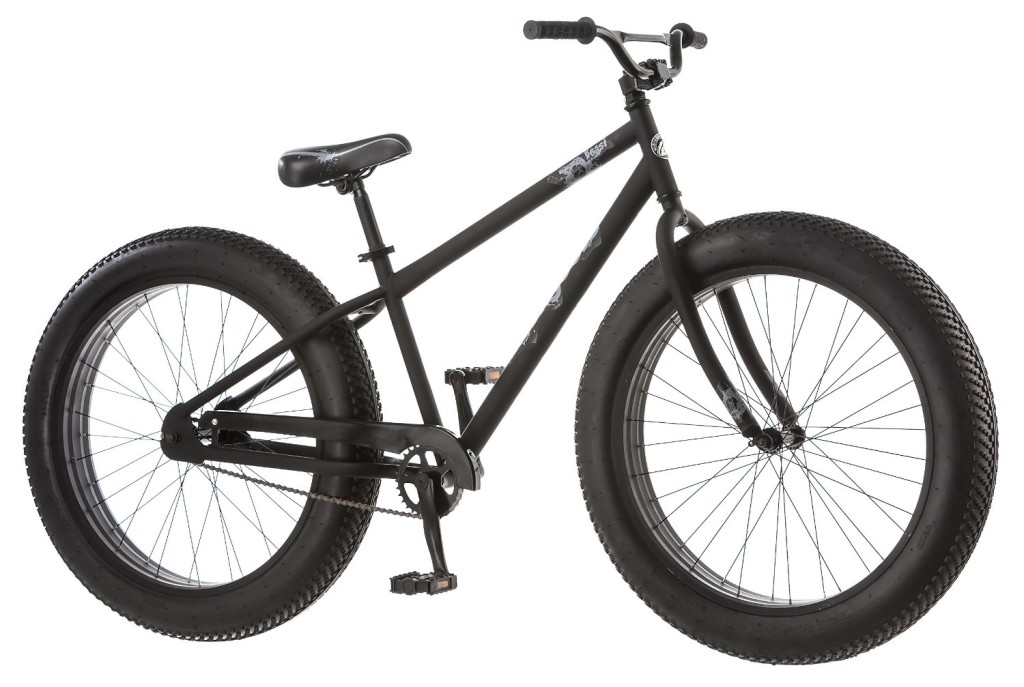 Click here to see the Beast best price
Click here to see the Beast best price
If you’re just starting out and need a fat bike on a budget, the Beast by Mongoose would definitely be one of the best options for you! Alloy 4” wide wheels ensure an incredibly smooth ride on a variety of surfaces, and the cruiser design frame gives you tons of support as you’re out there riding the rough terrain! Available in black, green, and red this fat bike is extra stylish, and sure to turn heads when you’re out riding it. The Beast is billed as a beach cruiser, meaning that you’re definitely going to enjoy riding this on the sand! But since it’s a fat bike, it’ll be great on rough roads and sand as well. This is a fixed gear unit in a cruiser style, meaning it’s more like a city bicycle with fat tires on it, so it’s not going to be the best for mountains or anything too rocky or steep. You’ll only have one speed, so maybe think about using this bike as an alternative to a tour bike on beaches and boardwalks! And the best part? That’s probably the price! Priced right for entry level, the Beast will run you just over $250—which is an incredible deal for a fat bike! You probably won’t see many bikes available for cheaper than that, but if you’re more interested in a higher quality fat bike, keep reading these fat bike reviews!
Yukon Fat Bike by GMC
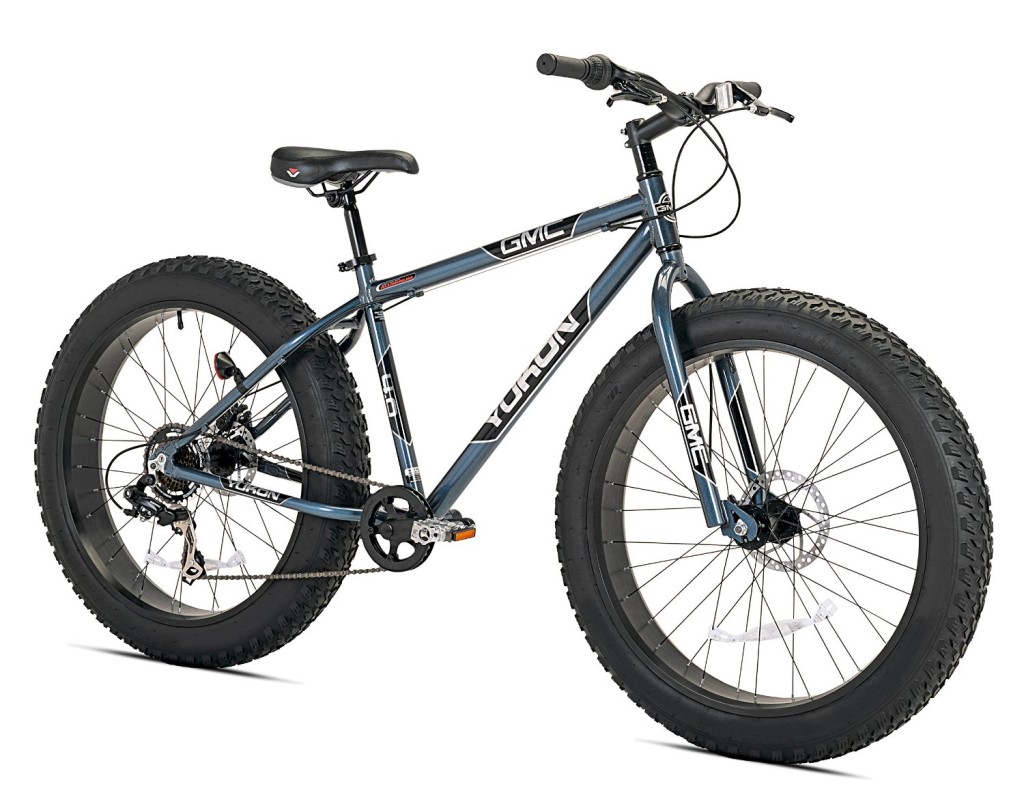
Click here to see the Yukon best price
The Yukon by GMC is a great mid-tier option for a fat bike. The aluminum frame easily holds 4” tires—providing an extra-wide experience! The Yukon features 6 speeds, so it’s ideal for riding in the mountains as well as on the sand and snow. This one weighs a little less than 40lbs, so it’s not exactly lightweight, but not as heavy as some of the cheaper steel fat bikes. The Yukon is specifically designed for both snow and dirt, so no matter the season, you know you’ll be riding in style and having a blast. Users specifically love this bike because it’s a great deal for the price, and even older riders say it’s a cinch to pick up riding! It’s not built for speed, but does well on all types of terrain. The GMC Yukon will run you about $500, which is a good middle price tier for fat bikes! If you’re someone who’s thinking about riding for a few years but casually, check this bike out today!
Minnesota Bike by Framed
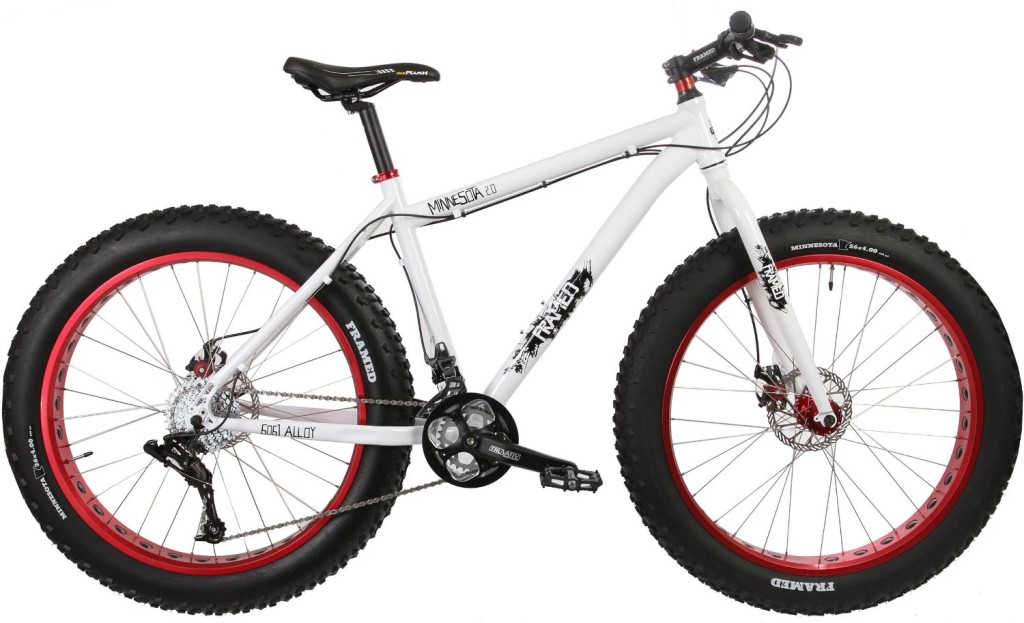
Framed Minnesota 2.0 Fat Bike White/Red Sz 16″Click here to see the Minnesota best price
This beautiful fat bike is on the higher end in terms of price, but it seriously delivers. A 6061 Alloy frame delivers unbeatable performance on dirt, sand, and snow, and users love this bike. The Minnesota is high-end enough where you’ll need to take it into a bike shop to have tuned up before riding, but it’ll be worth it in the end. Coming in at around $2,000, users report really loving this bike’s lightweight frame and adaptability. This particular product is a bestseller; if you’re planning to get heavy duty into fat biking, check it out today! And while you shouldn’t just pick out a fat bike based on aesthetics alone, you’ve gotta admit that the red trim and rims on this fat bike are just stunning. Imagine whipping through sand and snow in impeccable style with the Minnesota! Plus, true to its name, the Minnesota will be absolutely perfect for gliding through the coldest of winters. No need to rush inside for hotdish if you’ve got fat biking to keep you warm! This is definitely one of the most popular fat bikes reviewed, and you’re not likely to be disappointed with the Minnesota!
Sumo Fat Tire Bike by Kawasaki
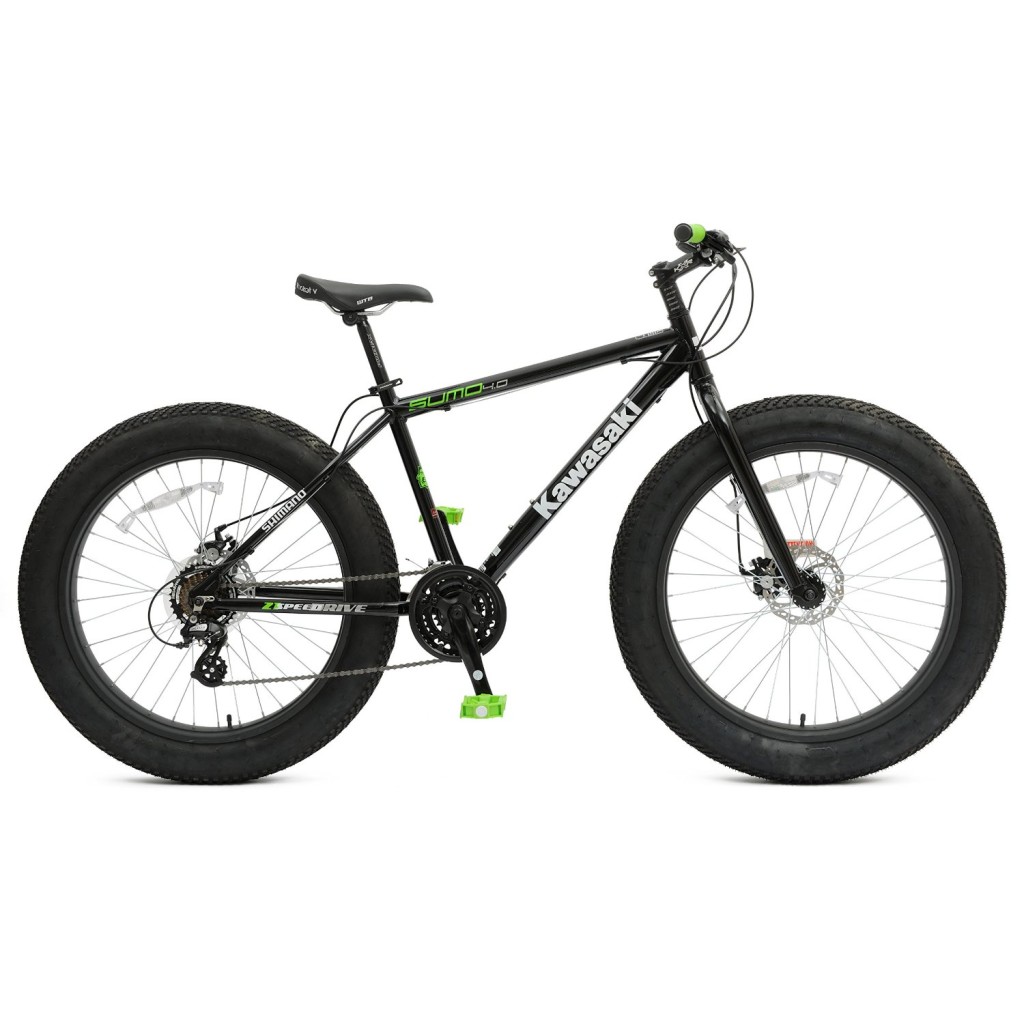
Click here to see the Sumo best price
Though you may have long associated Kawasaki with motorcycles, you’ll still be flying on this Sumo Fat Tire bike! The aluminum frame is relatively lightweight, and it features 21 speeds for maximum comfort and enjoyment while riding! While it weighs 47lbs, you won’t be struggling for long—think of how quickly you’ll be able to race uphill on this fat bike! Featuring 4” wide tires, the Kawasaki Sumo will have you flying on any terrain-snow, sleet, dirt, or sand! Users like this bike because even though it’s not the highest quality available, it’s a lot of fun for the price. Users say that the Sumo is particularly good in the summer, on the sand or on beaches. This product will run you just under $800, so if you’re not looking to spend too much but you want a bike with multiple speeds and an aluminum frame, this would be the perfect fat bike for you! If not, don’t worry; we still have one more fat bike review coming right up!
Mammoth Fat Tire Bike by Alton
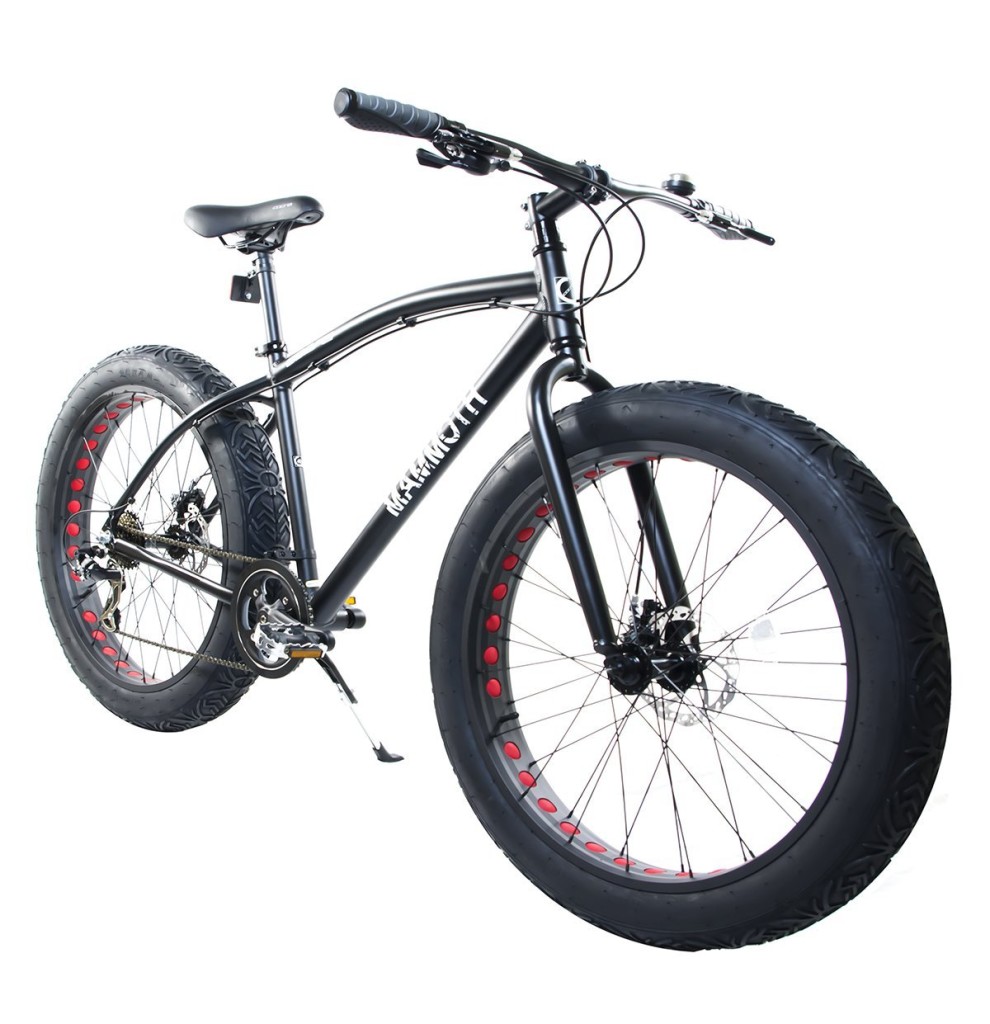
Click here to see the Mammoth best price
This incredibly lightweight fat bike features an alloy frame and 4” wide tires. Weighing in at only 36lbs, this is definitely one of the lightest fat bikes you could possibly hope to get! Users adore this bike, with some going so far as to call it “the best bike ever”—they say it’s both incredibly excellent at performing on rough terrain and providing a great way to stay fit! The rims are extremely sturdy and won’t bend, and the brakes are also solidly approved by reviewers. Additionally, it’s an incredibly stylish fat bike! The Mammoth by Alton boasts incredible durability and ease of steering on difficult terrain; it’s hard to imagine where this bike would look best, on the road, on the snow, or on the beach! And since it’s so lightweight, you could easily toss it in the backseat of your car for a weekend in the mountains. This one will run you just under $650, and it’s a great deal for a mid range fat bike! You’ll be riding and enjoying this for years to come, so don’t hesitate: the Mammoth by Alton is a really wonderful fat bike, and you’re sure to absolutely love it! Happy trails!
Get Ready, Get Set…
You’re probably dying to go pick up a fat bike after reading these reviews, and we can’t blame you! Remember to always look for a quality cycle at the cost level you feel comfortable spending, and always, always wear a helmet!
The Minnesota can be had for around $800. As well as the SE F@R. Both are more than 11 pounds lighter than that Kawasaki. Most of the bikes reviewed are junk and there are far better options if you look.
Any suggestions on where to look for the better options? I’m looking to buy one and any guidance will be helpful.
The Sumo actually goes for around $400 to $500 these days.